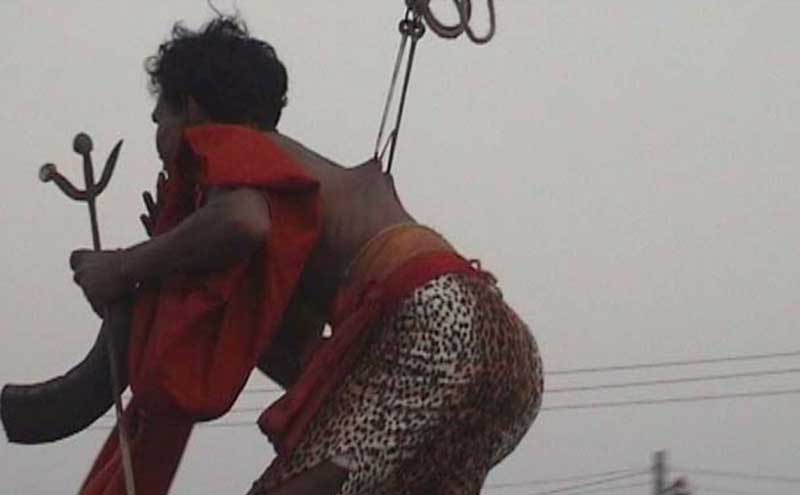
Charak Puja, one of the numerous folk festivals of the Hindu religion is celebrated in some parts of West Bengal, Tripura, Assam and also in Bangladesh, on the last day of the Bengali calendar year, which is consequently the last day of the month of Chaitra as well and is known as Chaitra Sankranti. In the ancient Hindu mythological literatures, known as the Puranas, there is a mention of song and dance festivals attached to the celebration of Lord Shiva in the month of Chaitra. However, they are completely silent about the Charak Puja.
The Charak, derived from the word ‘chakra’ or the wheel, represents the movement of the Sun. It is symbolised by a high pole, from which the devotees hang suspended from iron hooks, as a symbolic sacrifice to Lord Shiva. The devotees believe that the Charak Puja helps one reach salvation.
The history of the inception of the Charak Puja is actually unknown. Nevertheless, legend says, a king named Sundarananda Thakur is responsible for the beginning of the Charak worshipping in 1485, but the whereabouts of the king and his kingdom are not available. It seems that, the Charak Puja is, in fact, a folk culture of a portion of the Hindu society and is celebrated by the people of the lowly community of Hindus.

The traditional rituals of Charak Puja are all about worshipping the Charak tree, which is believed to be the abode of Ardhanarishwar, the composite form of Lord Shiva and his wife, Parvati, which symbolises Purush (Man ) and Prakiti ( Nature) in the deity. The Charak tree is actually the trunk of a tree or a log, around 20 to 30 feet in height, without any roots or branches, which is pulled up by several people. However, before the ceremonial worshipping and hoisting the tall Charak tree on the ground, an Idol or a Mask is attached to the top of a tree.
After that, the tree is worshipped by the priest, not necessarily by a high cast Brahmin, followed by several acts of penance around and on the tree, by the Charak Sannyasis, also known as the Gajan Sannyasis, to the delight of the enthusiastic gathering. In fact, the main ritual of Charak requires the devotees to embed iron hooks into their back and then hang themselves on the pole, around which they are made to swing like a human wheel.


While the public enjoys the show, the participating Sannyasis experience outrageous physical agonies and mental stresses, as the priests pierce sharp hooks on their backs. The bloodless piercing of sharp metals in the human body by the expert priests looks like a magic act. After the act of piercing, the hook held men fly in a circular way by the ropes fastened to the Charak tree on one end and to the hook on the other. After repeated circular motions, some even fall down from the height. Some people even get their tongue pierced with multiple needles and move around the Charak tree sitting on the shoulder on other devotees. After the celebration, the tree is immersed ceremoniously into a waterbody.
The horrible ritual attached to Charak Puja was prohibited by the ruling British in 1865. However, it is very much in vogue in the rural areas even today.

In Calcutta, Charak Puja is held every year in Chatu Babu Latu Babur Bazar, where the devotees do hang from Charak Tree, but they are tied with ropes and clothes and not with hooks pierced to their bodies.